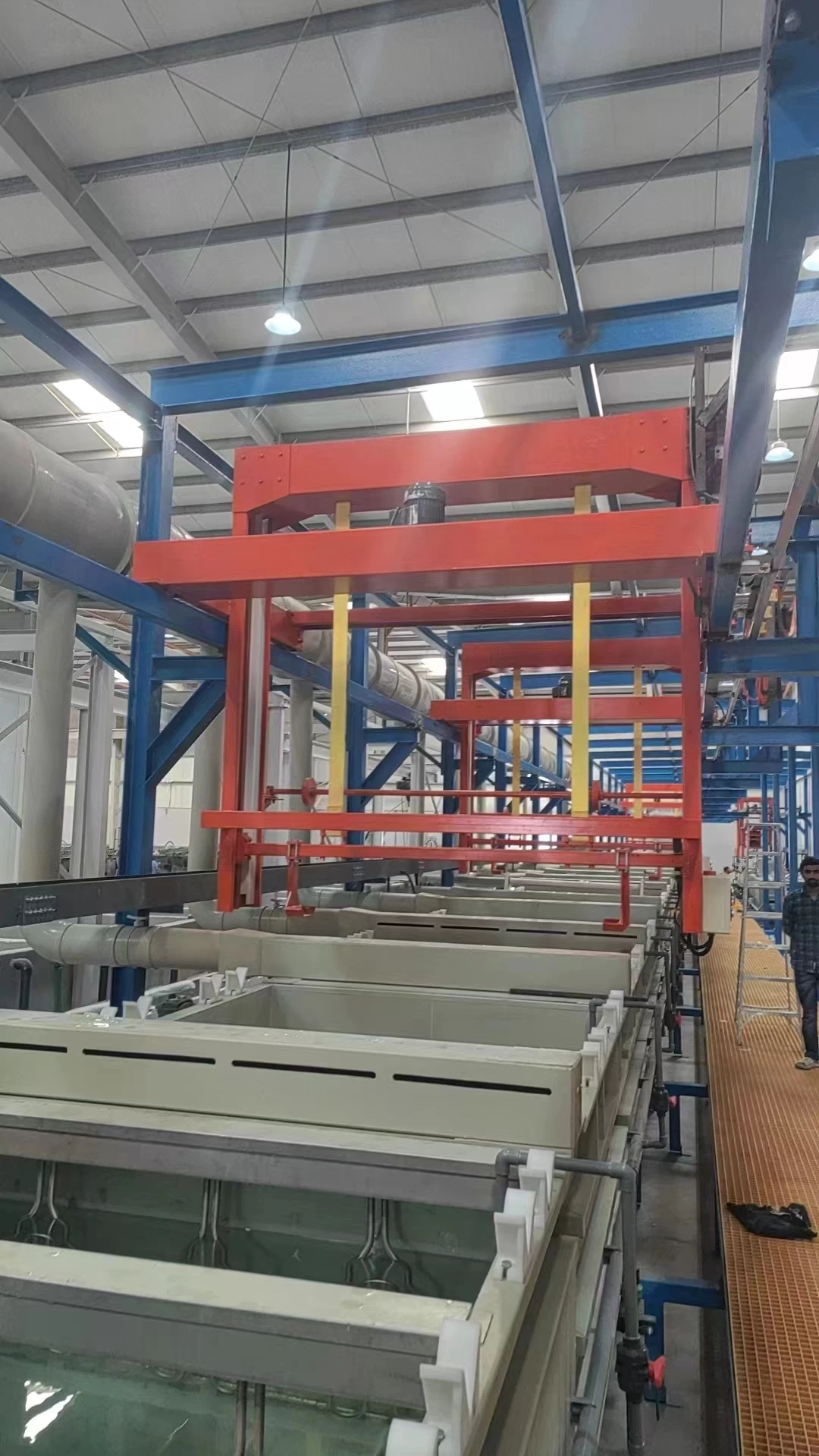The basic process of electroplating process
Gary Young
baidu
2024-02-22 14:46:13
The basic process of electroplating process usually includes the following steps:
Hanging: The plastic parts to be plated are fixed on the conductive tool so that they can form a closed loop with the power supply for electroplating.
Degreasing: Clean the surface of the parts to remove grease, dust, sweat and other substances, which will affect the effect of the subsequent process and the appearance of the parts.
Roughening: A strong acidic solution is used to dissolve certain components on the surface of the part, forming a microscopic rough surface and increasing the contact area between the plating layer and the part.
Neutralization: A reducing solution is used to remove possible residual acid from the surface of the part, preventing it from adversely affecting the subsequent process.
Catalysis: The adsorption of catalytic substances, such as colloidal palladium, in solution provides a catalytic center for the electroless nickel reaction.
Degumming: Removes colloidal palladium adsorbed on the surface of the part, leaving it bare and catalytically active.
Electroless nickel: A chemical nickel reaction occurs in the presence of a catalyst.
Pre-nickel plating: Add a layer of pre-nickel plating to improve the conductivity of the part.
Bright copper: A smooth and flexible copper layer is applied to the surface of the part to increase adhesion and cushioning.
Semi-bright nickel: A nickel layer that forms a semi-bright appearance with good ductility and leveling.
Pearl Nickel: Forms a nickel layer with a pearl glossy effect, giving the part an elegant appearance and a soft color.
Nickel seals (microporous nickel): In some cases, nickel seals are applied to improve corrosion resistance and sealing.
In addition, the electroplating process includes a number of auxiliary steps, such as polishing, cleaning, pattern transfer, washing, pickling, activation, pickling, tinning, secondary countercurrent rinsing, nickel plating, secondary washing, citric acid immersion, gold plating, recycling, pure water washing, and drying. These steps are designed to ensure the gloss, uniformity, and corrosion resistance of the plating layer
Hanging: The plastic parts to be plated are fixed on the conductive tool so that they can form a closed loop with the power supply for electroplating.
Degreasing: Clean the surface of the parts to remove grease, dust, sweat and other substances, which will affect the effect of the subsequent process and the appearance of the parts.
Roughening: A strong acidic solution is used to dissolve certain components on the surface of the part, forming a microscopic rough surface and increasing the contact area between the plating layer and the part.
Neutralization: A reducing solution is used to remove possible residual acid from the surface of the part, preventing it from adversely affecting the subsequent process.
Catalysis: The adsorption of catalytic substances, such as colloidal palladium, in solution provides a catalytic center for the electroless nickel reaction.
Degumming: Removes colloidal palladium adsorbed on the surface of the part, leaving it bare and catalytically active.
Electroless nickel: A chemical nickel reaction occurs in the presence of a catalyst.
Pre-nickel plating: Add a layer of pre-nickel plating to improve the conductivity of the part.
Bright copper: A smooth and flexible copper layer is applied to the surface of the part to increase adhesion and cushioning.
Semi-bright nickel: A nickel layer that forms a semi-bright appearance with good ductility and leveling.
Pearl Nickel: Forms a nickel layer with a pearl glossy effect, giving the part an elegant appearance and a soft color.
Nickel seals (microporous nickel): In some cases, nickel seals are applied to improve corrosion resistance and sealing.
In addition, the electroplating process includes a number of auxiliary steps, such as polishing, cleaning, pattern transfer, washing, pickling, activation, pickling, tinning, secondary countercurrent rinsing, nickel plating, secondary washing, citric acid immersion, gold plating, recycling, pure water washing, and drying. These steps are designed to ensure the gloss, uniformity, and corrosion resistance of the plating layer















